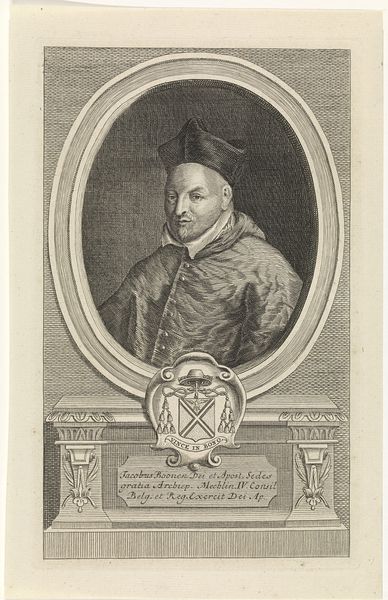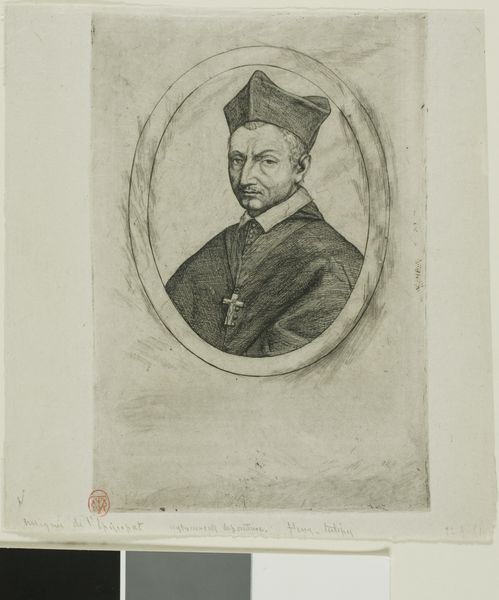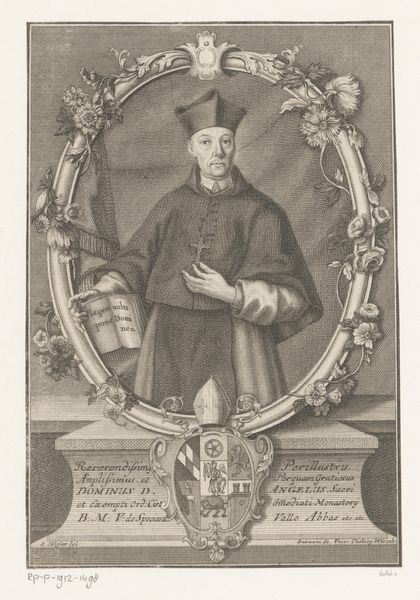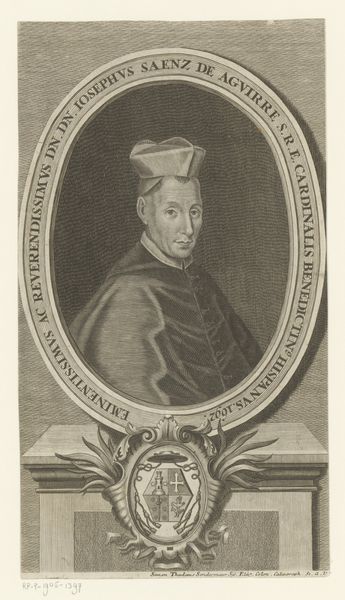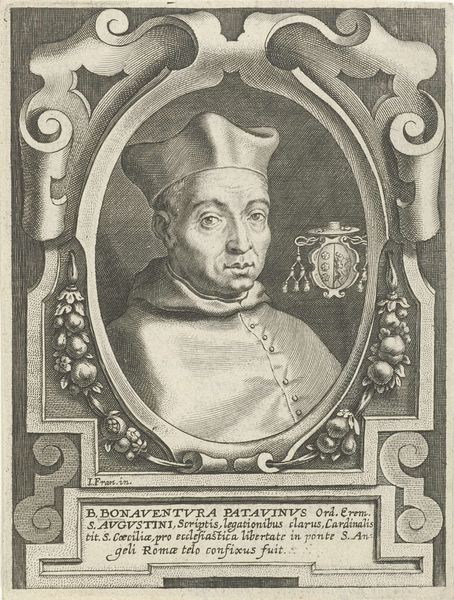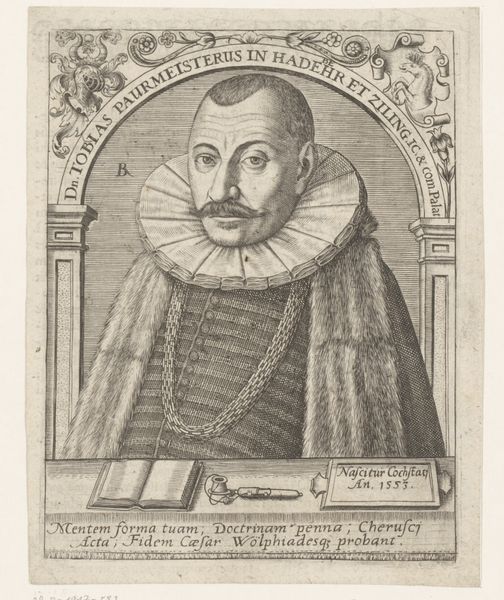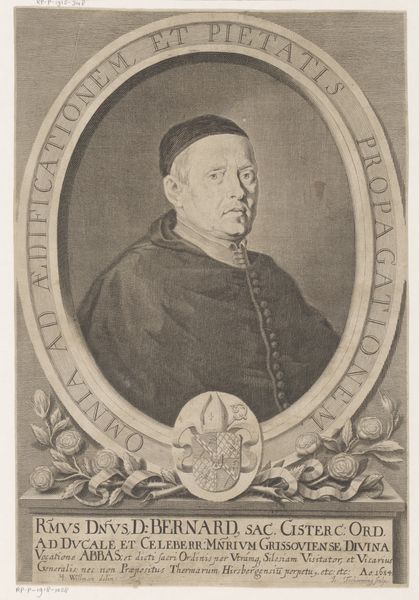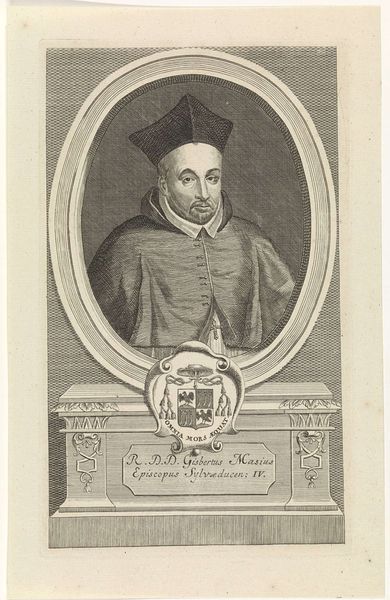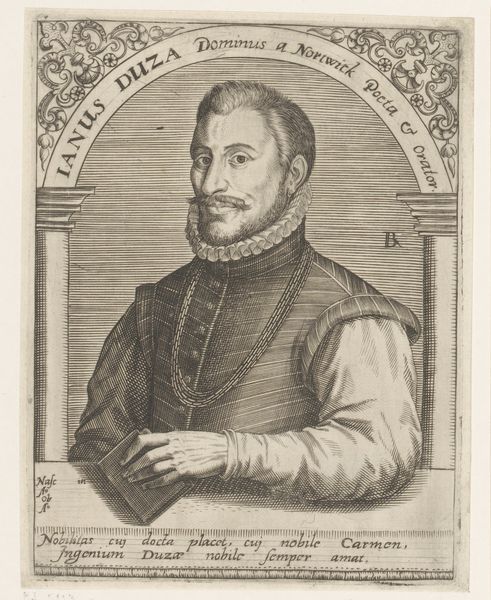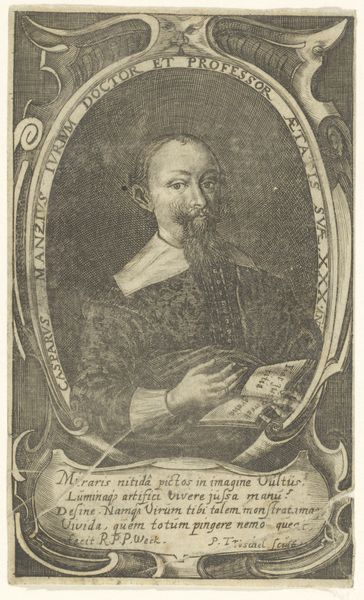
Dimensions: plate: 6 3/8 x 4 1/4 in. (16.2 x 10.8 cm)
Copyright: Public Domain
Editor: So, this is Charles Meryon's 1861 intaglio print, "Pierre Nivelle, Bishop of Luçon, after Lasne." It's a portrait, surrounded by what looks like foliage and symbolic objects. The overall impression is one of formality and maybe even a bit of severity. How do you interpret this work? Curator: I see a fascinating example of how artistic labor and reproduction intersect with social status. Meryon wasn't creating an original portrait of Nivelle; he was meticulously re-producing an earlier image, acting almost as a skilled artisan rather than an "inspired" artist. Consider the labour involved in recreating Lasne’s original. Does this process elevate or diminish the artistry, and what does that say about artistic creation in the mid-19th century? Editor: That's an interesting point. I hadn't really considered the role of Meryon as a craftsman copying someone else's work. The act of reproduction almost feels… mechanical, but the engraving itself is clearly highly skilled. Curator: Exactly! Think about the materials: the copperplate, the inks, the press. These aren't just neutral supports. They dictate the possibilities and limitations of the image. How does the choice of engraving as a medium contribute to its dissemination and accessibility, considering its historical context and the social role of prints? Editor: So you're suggesting that the social impact of making prints like this is more meaningful than the portrait's likeness itself? It becomes less about Bishop Nivelle himself and more about the process and reach of the image. Curator: Precisely! By focusing on the materials, labor, and consumption of this image, we shift our understanding of art away from individual genius and towards broader social and economic networks. Editor: Wow, that gives me a whole new perspective on prints and portraiture. I’m now considering the process as much as the final image, which is truly revealing. Curator: That's the key—to understand the artwork's meaning through its creation and consumption within society.
Comments
No comments
Be the first to comment and join the conversation on the ultimate creative platform.
